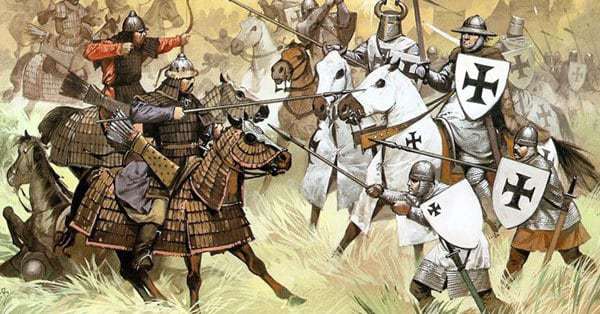At the end of the twelfth century the Mongols were a tribal people. They led a nomadic life centered on their horses. They moved with the horses to find pasture that had not yet been exhausted, supporting themselves on the horses’ milk and blood. Unsurprisingly, they were fantastic horsemen and archers, frequently supplementing their pastoral livelihood with raids on the trade routes that linked China, India, and Persia.
Early in the thirteenth century a single Mongol chieftain by the name Temujin would unite the eastern Mongolian tribes into a confederation. Having united the tribes Temujin took on the name “Universal Leader” or Genghis Khan. In the course of a generation he would transform the Mongol tribes from a minor nuisance to caravans into the most fearsome army the world had ever seen. What follows are the most significant campaigns in the creation of the largest land empire in history.

The Conquest of Western Xia and Jin China
In 1207, the year after taking his title, Genghis Khan embarked upon his first expansionist project. He cast his eye upon the Chinese Western Xia dynasty. His people were not yet strong enough to challenge the Western Xia directly, so they first fortified themselves by raiding the borderlands and harassing garrisons. By 1209 Genghis Khan was confident enough to commit his followers to a full scale invasion. When the Western Xia Emperor Li Anquan received news that the Mogols were advancing up the Yellow River towards the capital at Yinchuan he appealed to the Emperor of Jin China for help, but none came.
In the ensuing invasion the Mongols would demonstrate that while they were virtually invulnerable in the open field, they were still amateurs when it came to siege warfare. At Kiemen they attempted for two months to take a fortress on the Yellow River but proved incapable of subduing a fortified position. The deadlock between the two parties was only broken when Ghenghis Khan bluffed a retreat to draw the defenders out of the fortress and onto clear ground where the Mongols could take advantage of their quick horses archers to annihilate the garrison.
Having cleared out Kiemen, the Mongols followed the river to Yinchuan, seeking Li Anquan’s submission. The Emperor, still in control of twice as many men as the Khan, chose to defend his city. With their difficulties at Kiemen still fresh in mind, the Mongols chose a different approach to this new fortress. They molded the earth near the Yellow River to build a channel that would redirect the river into the city, hoping to flood the defenders out. The dykes that they built for the project were faulty, though, and when they released the river one of them gave out and flooded the Mongol camp.
Though their plan to drown Yinchuan had failed, damage to the irrigation infrastructure from the river diversion and Mongol pillaging had ravaged crops in the area. Faced with an impeding famine, Li Anquan gave in and pledged his support to the Mongols. In what would become a hallmark of his approach to conquered people under his rule, Genghis Khan granted Li Anquan mercy in exchange for his support in future campaigns.
In 1211 Genghis Khan would make the Jin Emperor regret his decision not to aid the Western Xia dynasty when his lands became the next target of the Mongols. Just as before, the Mongols were simply unbeatable in the field but would struggle with city sieges. But with the help of their new Chinese vassals they were able to construct catapults and subdue all the cities between the Yellow River and the Great Wall. The capital at Yanjing, now called Beijing, fell in 1215 making the Mongols the masters of northern China.

